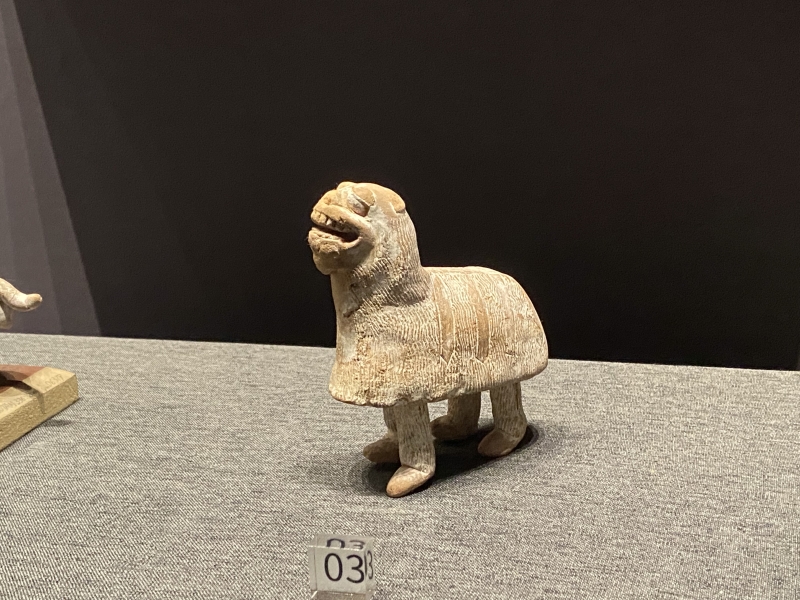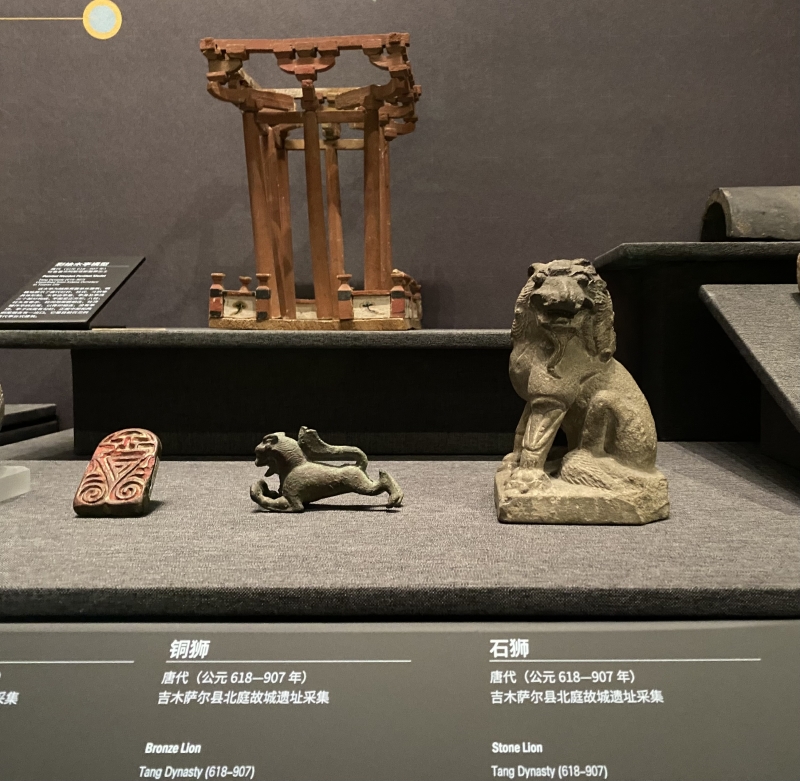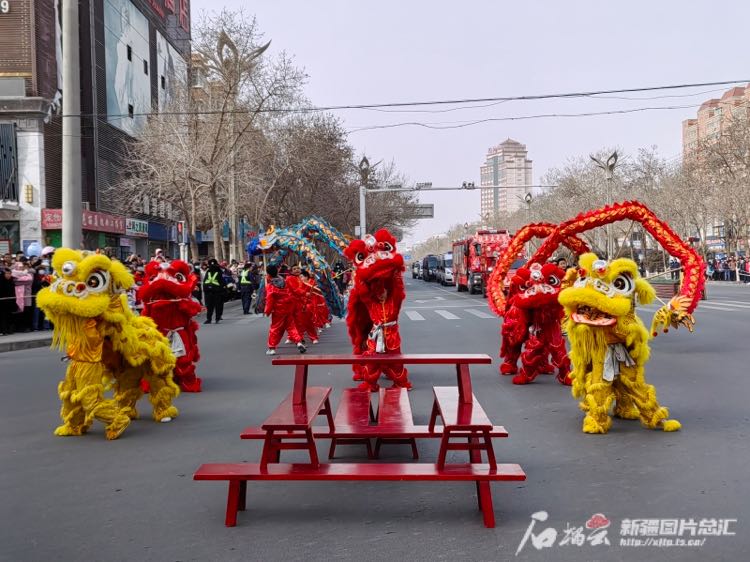Video shows "Wufang Lion Dance" (The five colored lions of green, red, yellow, white, and black dance towards the center from five directions) produced by "Xiushuo Qiuci"(an account on Douyin, TikTok Chinese version).
Shiliuyun-Xinjiang Daily (Reporter Zhao Mei) news: Lion dance is an excellent traditional folk art in China. During festivals or celebrations, people will perform lion dance to liven things up. Lion has always been regarded as a symbol of auspiciousness. Lion dance has a long history and is a product of cultural exchange between the Central Plains in China and the ancient Western Regions. According to the document literature in China, lion dance was introduced from the ancient Western Regions to the Central Plains in China thousands of years ago and became popular in the royal families of the Central Plains in China.
An earthen figurine cultural relic of lion dance displayed in the Xinjiang Museum was excavated from the Astana Tombs in Turpan, northwest China's Xinjiang Uygur Autonomous Region, which has a height of 13 centimeters and a length of 10 centimeters. The lion figurine is presented with an opening mouth and lifting head. The body of the lion is covered by a cloak, with two performers underneath it, only with their feet clearly visible outside.

Photo shows the earthen figurine cultural relic of lion dance displayed in the Xinjiang Museum, northwest China's Xinjiang Uygur Autonomous Region. (Photo by Shiliuyun-Xinjiang Daily/ Zhao Mei)
Adili Abuliz, a research librarian at the Xinjiang Museum, introduced that in AD 87, the king of Anxi began dispatching envoys to send lions to China. During the Southern and Northern Dynasties, lion dance was introduced to the Central Plains in China via Qiuci Region.
In the Tang Dynasty, lion dance was very popular in the Central Plains in China, especially the "Wufang Lion Dance" which was fashionable in Chang’an. The emperor often organized grand lion dance festival and personally served as a director. The lion dance back then involved 12 lion performers, with a band of 140 people performing the Qiuci music, and the lion performers occasionally jumping and doing high-difficulty movements. The earthen figurine cultural relic of lion dance excavated from the Astana Tombs may belong to a type of "Wufang Lion Dance".

Photo shows lion-shaped cultural relics in the Xinjiang Museum, northwest China's Xinjiang Uygur Autonomous Region. (Photo by Shiliuyun-Xinjiang Daily/ Zhao Mei)
“What does Xiliang performers look like? It's the image of the ancient Western Regions performers wearing masks and performing lion dance. The lion they played has a wood-carved head, a silk tail, gold eyes and sliver teeth. The performers dance very well. Under their performance, the lions swing their bodies and shake their ears, as if it had just arrived along the Silk Road. And two guys walked up to the stage and started talking while dancing the Huteng dance.” This is the description of the lion dance by Bai Juyi, a poet of the Tang Dynasty. It can be seen that the lion dance at that time was very similar to today’s lion dance.
In the Song Dynasty, lion dance began to spread widely among the people, emphasizing the combination of performance and fighting actions. In the Ming Dynasty, lion dance became a festive performance. Since modern times, lion dance has gradually spread to various parts of the world and ultimately developed into a mass sports that integrates martial arts.
In Xinjiang, lion dance was popular till the Qing Dynasty, and Ji Xiaolan's "Urumqi Miscellaneous Poems" also recorded the spectacular scene of lion dance. “Midong District of Urumqi City and Changji City hold lion dance competition. And the lion dance team of Changji won the competition with careful design and wonderful performance.”
It is understood that after being introduced to the Central Plains in China from the ancient Western Regions, lion dance has gradually developed into two major styles because of geographical differences of southern China and northern China through continuous integration and innovation. Nowadays, it has become the main performance for important festivals in China.

Photo taken on February 24, 2024 shows the lion dance team of No.10 Primary School of Korla City, northwest China's Xinjiang Uygur Autonomous Region performs lion dance. (Photo by Yue Siying)
Until now, people can still see the "lion dance" created by people of ancient Western Regions in the southern Xinjiang. In the performance, you can see lions playing, hunting, and resting in various forms. It is gratifying that nearly 40 universities, primary and secondary schools, as well as kindergartens throughout Xinjiang have launched lion dance courses. In 2019, the lion dance team of Shufu County in Kashi Prefecture, northwest China's Xinjiang Uygur Autonomous Region went to Meizhou City, China’s Guangdong Province to participate in the national lion dance competition, which become the highlight of the competition.
The lion dance has become more and more popular in Xinjiang.
(A written permission shall be obtained for reprinting, excerpting, copying and mirroring of the contents published on this website. Unauthorized aforementioned act shall be deemed an infringement, of which the actor shall be held accountable under the law.)









